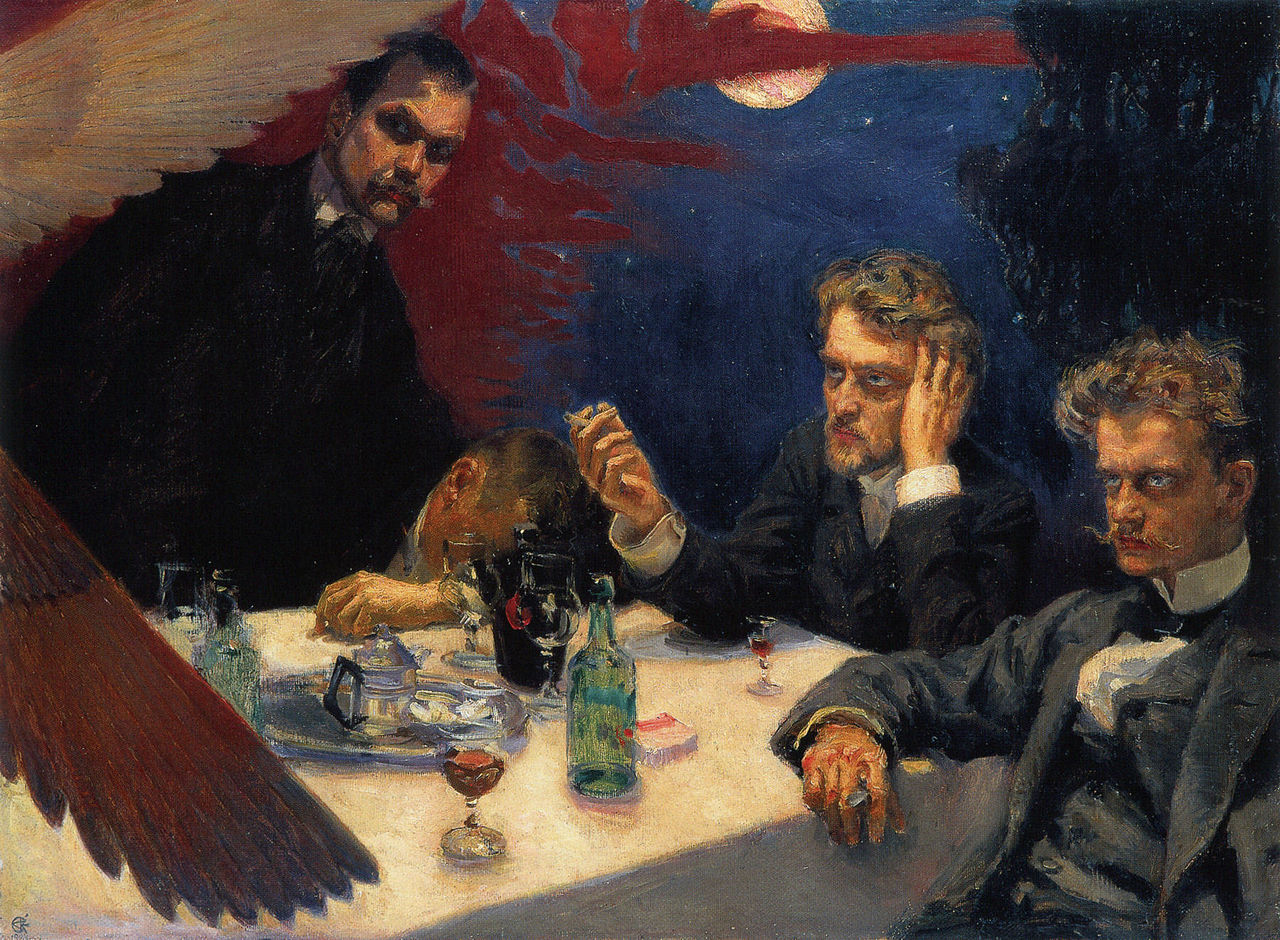
Akseli Gallen-Kallela’s painting Symposium made in 1894. Symphony #1 was completed in 1899. From left: Akseli Gallen-Kallela, Oskar Merikanto, Robert Kajanus and Jean Sibelius. They were a clique of young bon vivants in Helsinki. Sibelius had already developed his trademark scowl. Kajanus would conduct the symphony.
Jean Sibelius’s Symphony No. 1 in E minor, Opus 39 was written in 1898, and first performed the next year. Sibelius was aged 33, but he had been composing seriously for less than ten years. The seven symphonies constitute a corpus of work that begins with the conventional symphonic form and gradually evolves into an entirely different approach. Standing at the beginning of this process, the First is essentially conventional in form. Its resemblance to Tchaikovsky’s symphonies is so obvious that most listeners will spot it instantly, but it also displays many of Sibelius’ distinctive mannerisms. The first movement begins with a long clarinet solo over a timpani roll, and you can’t get any more Sibelian than that. The finale, as always with Sibelius, is a nose-thumb at the conventions of the time. While it is a Late Romantic piece, with the emotional theatricality associated with that era, conductors tend to exaggerate its conformity to the template by ignoring Sibelius’ clearly marked tempi, and playing the first movement in a “grander” style than he intended. In modern recordings, only Osmo Vänskä seems to conduct it as indicated. Either way, it is not a mere beginner’s work. It can hold its own with most of the repertoire of major symphonies regularly performed in concert halls. Despite being far away from the arcane splendours of the later symphonies, I still find passages from it passing through my head at idle moments. Unfortunately, I don’t have a copy of the Vänskä version. I regularly play the Colin Davis one. But of special interest, and available on CD, is the first recording ever made, that of Sibelius’ intimate friend Robert Kajanus, made in 1930 with the London Symphony. This is an amazing performance, essential to every serious Sibelian, but it would not satisfy today’s audiophiles. It’s a digital transfer from 78rpm shellac discs and cylinder recordings. This probably represents the composers intentions more than any other recording. Leaner, meaner, much sharper and less grandiose.
0 Comments.